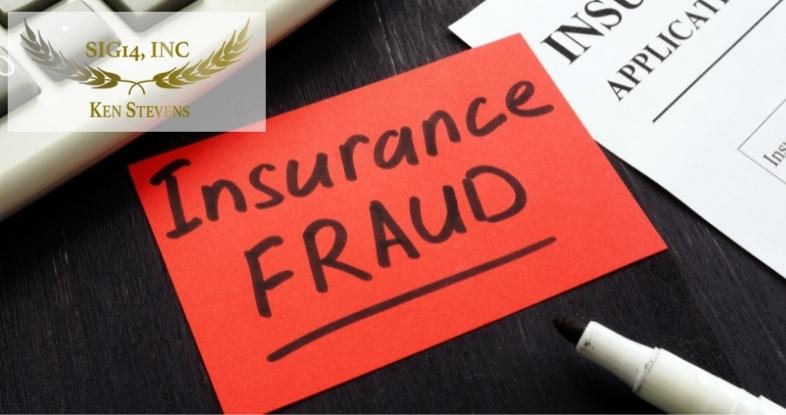
Insurance Fraud Stats for 2022
Insurance Fraud Statistics – Alarming Facts and Figures
A recent survey of 420 insurers found that there has been growing suspicion of fraudulent claims. These findings are no surprise, primarily due to the advancement of digital processes, which have created more opportunities for fraudsters.
Today, Americans lose approximately $80 billion annually to insurance scams, according to the Coalition Against Insurance Fraud. The numbers don’t stop there.
Here are insurance fraud statistics for 2022.
General Insurance Fraud Statistics
1. Property and casualty fraud schemes cost $30 billion a year between 2013 and 2017.
According to the Insurance Information Institute, property and casualty (p&c) insurance fraud stats fluctuate yearly. For this reason, determining the actual losses can be challenging. Last month, the National Insurance Crime Bureau stated that p&c insurers had to pay between 4.6 and 9.2 billion dollars extra to cover fraudulent disaster claims.
2. 13% of employers worry that their staff are capable of workers’ compensation fraud.
Employers.com highlights two types of workers’ compensation fraud, claimant and premium fraud. The latter occurs when employers are the perpetrators.
Examples include payroll misrepresentation and staff misclassification. Claimant fraud includes faking accidents, magnifying claims, and demanding more benefits than you are due.
3. In 2019, U.K. insurance firms recorded 300 insurance fraud cases daily.
2019 was a hectic year for U.K. insurers—registering an insurance scam attempt every 5 minutes, a five percent rise from 2018. The total was approximately 107,000 claims by the end of the year. Remember, these figures represent what the Association of British Insurers detected. Therefore, the actual number could be much higher.
4. The latest insurance fraud statistics reveal that U.S insurers found a fraud attempt in 18% of 2020 claims.
Insurance companies in the United States noticed a spike in fraudulent claims during the first year of COVID-19. Previously, such claims would account for 10 percent but have doubled since the pandemic. Among the most common were staged home accidents and vehicle theft.
Health Insurance Fraud Statistics
5. Approximately 3 to 10 percent of medical care expenditure consists of fraudulent claims.
U.S. insurers lost about 81 to 270 billion on health insurance fraud in 2011. These fraudulent claims occur in various facilities, from nursing homes to manufacturing companies. The perpetrators also vary from attorneys to suppliers.
6. 2020 saw about $42.94 billion worth of irregular Medicare payments (all types combined).
Healthcare fraud rates have declined over the years. For instance, improper payments for Medicare fee-for-service accounted for 7.25 percent for fraud cases in 2019. By 2020, this number went down to 6.27%.
7. Improper Medicaid payments increased during the first year of COVID-19.
Irregular costs for Medicaid surged, unlike Medicare. By 2020, these remittances accounted for 21.36%, a jump from 14.90% the previous year.
8. Fraudsters made 5.1 billion robocalls in 2018.
For most people, spam calls are all about telemarketing campaigns. For this reason, fraudsters use these robocalls to try and sell fake coverage. Some are quick to catch these attempts. Others are not so lucky and divulge significant personal details, making them vulnerable to identity theft.
Auto Insurance Fraud Statistics
9. Premium leakage is responsible for $29 billion of auto insurance expenditure.
Premium leakage occurs when someone omits information leading to inaccurate insurance rates. Both the claimant and agents can commit this form of auto insurance fraud. For instance, the agent may tell their clients to give false details to receive lower rates.
10. 1 in 5 Americans find it acceptable to commit insurance fraud under specific circumstances.
The Coalition Against Insurance Fraud survey found that some Americans supported insurance fraud. Additionally, about 68% believe that insurance fraud is rampant as many think they can do so and not hurt anyone in the process.
Insurance Anti-Fraud Statistics
11. The District of Columbia and 46 states have a dedicated fraud bureau.
Each bureau has different rules; some have limited powers while others receive more resources. For instance, insurance fraud bureaus in Virginia are part of the police force, meaning they can access a wide range of resources.
12. In 2019, 21 percent of insurance companies said they planned to install fraud detection software.
Predictive analytics is one of the ways companies can mitigate fraud. Also, 43% of employers examine social media when performing fraud investigations.
Hiring a Private Investigator for Insurance Fraud Investigations
With the current fraud trends, it is vital to hire a private detective to identify exaggerated insurance claims and nip it in the bud. If you are looking for a private detective in Tampa with timely services, see Ken Stevens from Sig 14 Investigations.
Our investigations team will help you resolve different cases, from auto accidents to p&c insurance fraud detection. Do you need a seasoned fraud investigator? Contact us at (813) 261-1192 | (813) 492-5775 to book a no-cost consultation today.


